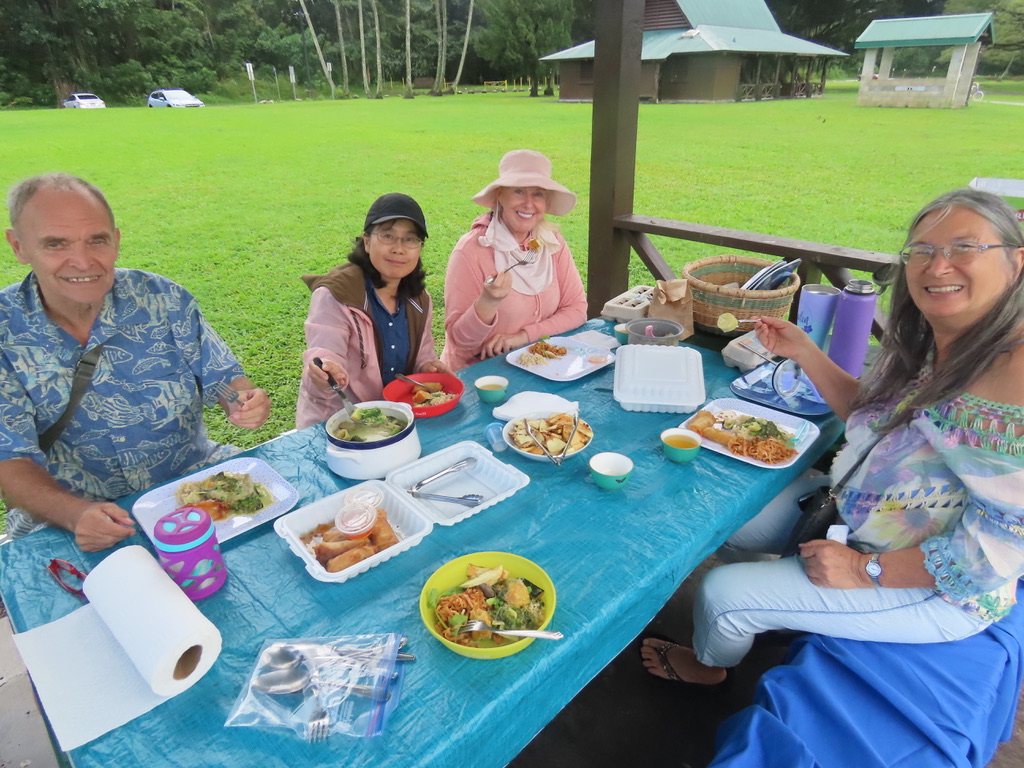
Picnic with her Friends in Hilo, Hawaii
My Fulbright Story

Picnic with her Friends in Hilo, Hawaii


Original text is in Japanese
“I had been thinking about how I could contribute to the literary studies in the US,” says Prof. Nakachi Sachi. While she was studying the 20th century American modernist literature as a doctoral student, she became interested in the American perception of haiku, ukiyo-e, and other elements of Japanese culture. Prof. Nakachi appreciated the Fulbright scholarships she received in 2009 and 2022.
“I spent my graduate student days in the American Midwest. Since America is such a diverse country, I wanted to see the other regions of the US. The Fulbright scholarship fulfilled my wish. I was affiliated with New York University from September to December in 2009 and the University of California, Berkeley, from January to March in 2010. Staying on the East coast and then on the West coast, I could have unique experiences in each host institution.” In her first Fulbright experience, Prof. Nakachi also received the Fulbright Outreach Lecturing Fund (OLF) and had the opportunities to visit HBCUs (Historically Black Colleges or Universities) and lecture there. “My research on African American writers and the Harlem Renaissance gave rise to my interest in HBCUs that have produced many African American leaders. Engaging with HBCU students in the classroom was a great experience for me.”
For her second Fulbright, she researched at the University of Hawaii at Manoa to pursue her studies on Japanese references in American poetry and Japanese influence on the American women woodblock artists at the turn of the 20th century. “The book by Professor Mari Yoshihara from the Department of American Studies at the University of Hawaii inspired me. Another reason I chose Hawaii this time was to gain a more comprehensive understanding of the diversity of American culture.” Prof. Nakachi’s interest extended to the traditional Hawaiian and Japanese American culture and history in Hawaii. “In Hawaii, I noticed that Hawaiian words were used as well as English in many places. I came to understand the Hawaiian Renaissance that began in the 1970s. The local people of Hawaiian ancestry recovered their Polynesian culture and identity.” She then learned about the traditional Polynesian voyaging canoe Hokule’a which broadened her understanding of the inclusive culture of today’s society. “I had been reading American minority literature such as African American literature, Asian American literature, and Native American literature for a long time, but I realized that I did not know anything about Hawaiian culture in America. So, this experience broadened my horizons.”
Since her return to Japan, Prof. Nakachi has been compiling her research outcomes into a book and speaking to students about her experiences as a Fulbrighter. “We live in the time of turmoil. Amid the international wars and conflicts going on today, it is important that people in the world try to understand each other and respect each other’s culture. A study abroad program gives us the opportunity to interact with various people in the world and understand various perspectives. That’s why I hope young people will go out of Japan and study abroad as I did.”

